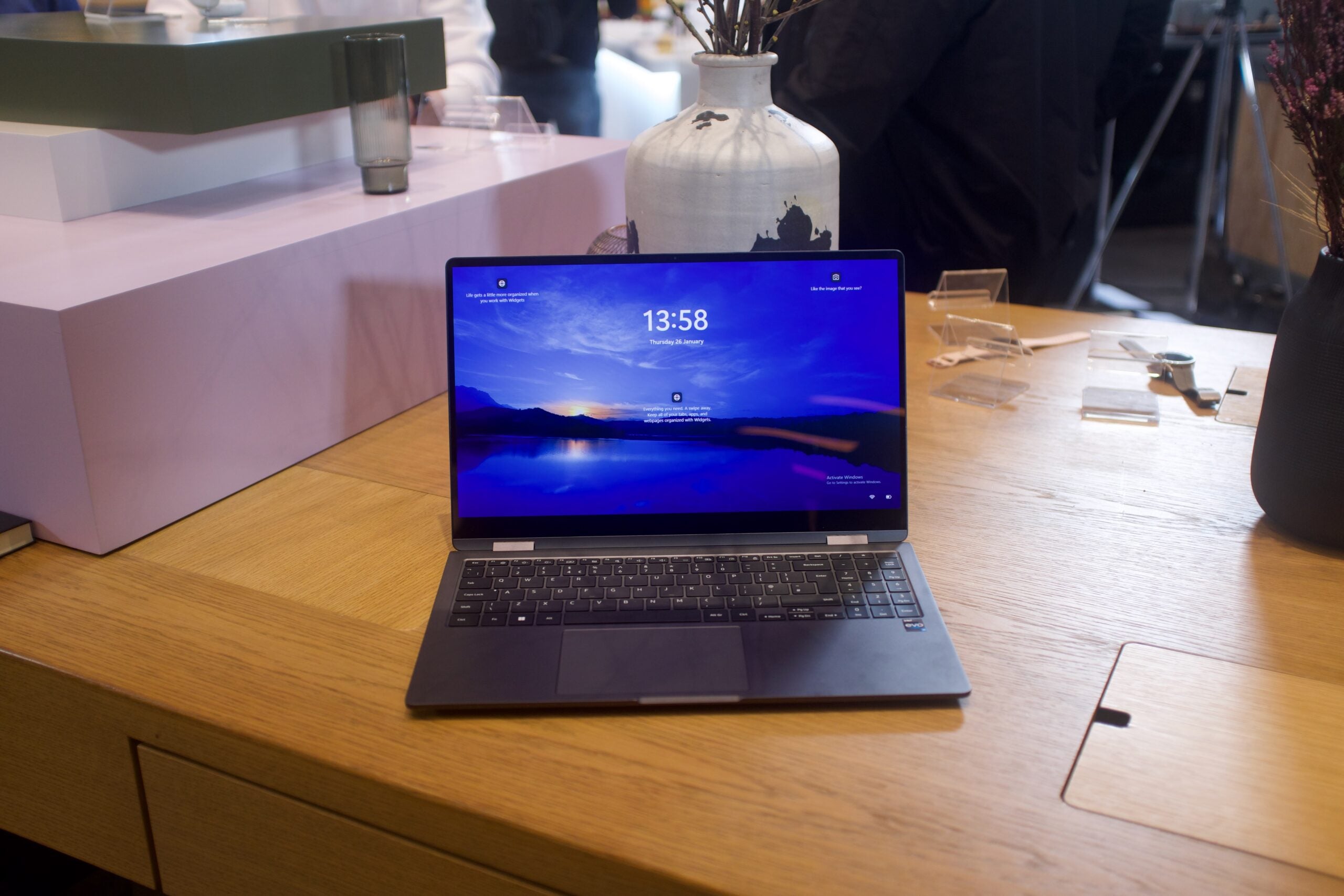Samsung Galaxy S23 Review
Is the Galaxy S23 worth it now that the Galaxy S24 is here?
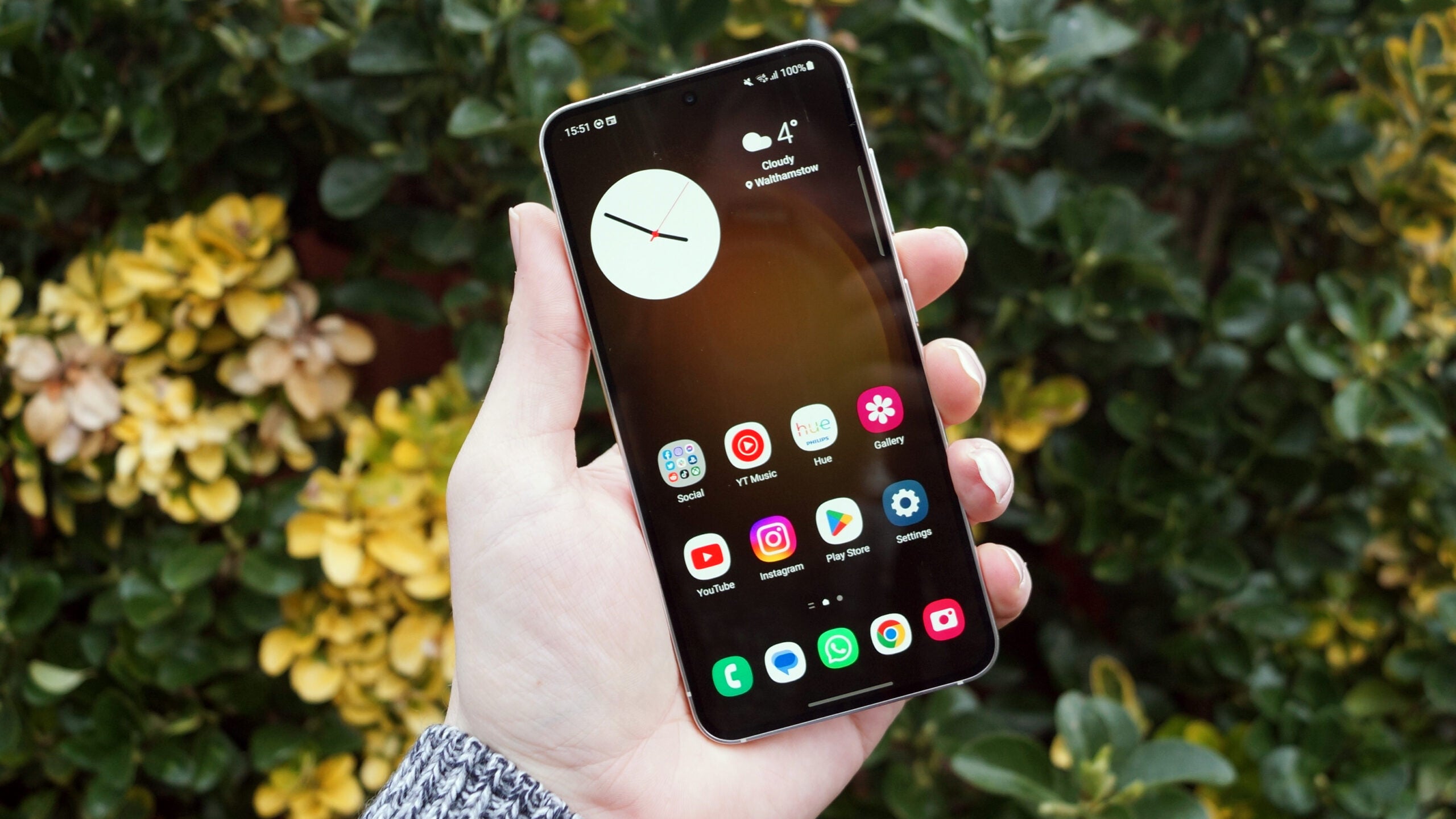


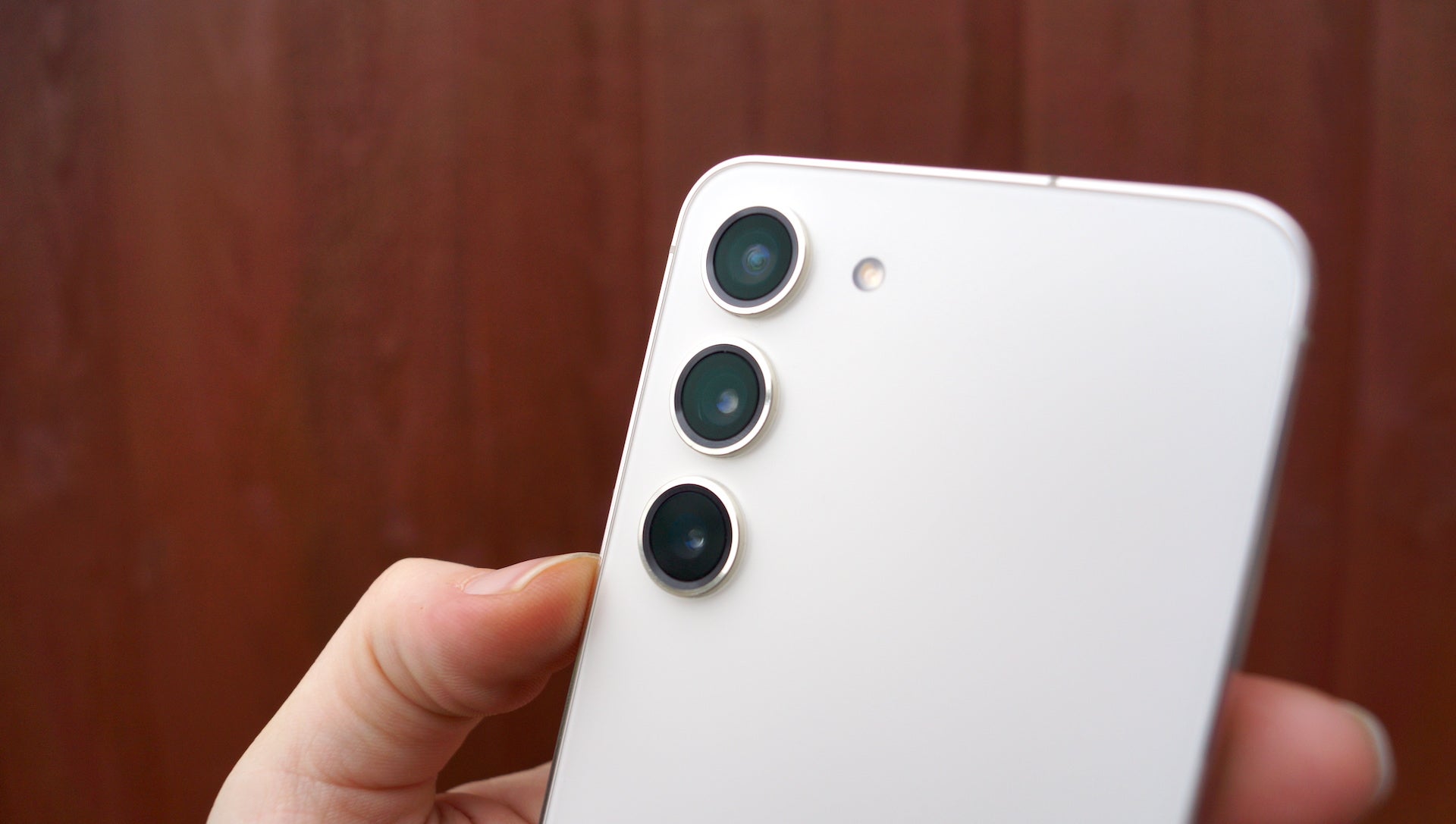



Verdict
It might not be all that different from the Galaxy S22, but the Samsung Galaxy S23 remains an excellent compact choice without much compromise, boasting top-end performance, versatile camera chops and, for the first time, true all-day battery life – and with the release of the newer S24, it’s cheaper than ever.
Pros
- Pocketable, minimalistic design
- All-day battery life
- True flagship performance
Cons
- Near-identical to Galaxy S22
- Slow charge speeds
- Display only drops to 48Hz
Availability
- UKRRP: £849
- USARRP: $799
- EuropeTBC
- CanadaTBC
- AustraliaTBC
Key Features
- Pocketable designThe 6.1-inch display and slimline body make for a pocket-friendly phone that’s very comfortable to use one-handed.
- All-day battery lifeDespite having the smallest battery in the range, the Galaxy S23 manages to provide all-day battery life without issue.
- Capable triple camera systemThe S23’s combination of a 50MP main, 12MP ultrawide and 10MP 3x telephoto makes for a versatile setup, even in low-light conditions.
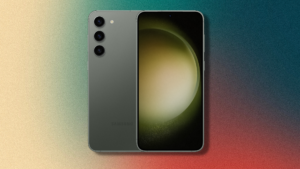
Samsung Galaxy S23 deal
Amazon has the Samsung Galaxy S23 128GB version for just £849
- Amazon
- £849
Introduction
The Samsung Galaxy S23 is the most affordable phone from the 2023 generation of Samsung’s S-Series. It might’ve now been replaced by the newer Galaxy S24, but the Galaxy S23 is still worthy of your consideration.
The Galaxy S23 shares many of the same high-end features as its Galaxy S23 Plus and Galaxy S23 Ultra siblings, including the Snapdragon 8 Gen 2 processor, 120Hz refresh rate and the AMOLED display.
It’s both smaller and lighter than the other Galaxy S23 phones too, with the 6.1-inch screen making it easier to slip into your pocket and type with one hand.
You will admittedly miss out on a bigger battery and superior camera, but the Samsung Galaxy S23 still represents fantastic value – especially now that it’s cheaper with the reveal of the newer Galaxy S24 range. I’ve spent numerous weeks with the Samsung Galaxy S23, and here’s what I think.
Design
- Portable, pocket-friendly form factor
- Same minimalist design as the S23 Ultra
- Variety of colour options
The Samsung Galaxy S23 might look very familiar if you’ve seen or used a Galaxy S22, but there are a few key changes on offer from the 2023 flagship that improve things somewhat.
The most immediately noticeable change for many will be the removal of the contour camera housing on the rear, replaced instead by a minimalist line of cameras that mimics that of the top-end Galaxy S23 Ultra, though I’d argue that it looks more like an iPhone than ever – especially when combined with the relatively flat sides and the curved corners of the phone. But hey…

It’s undoubtedly a nice move considering the standard Galaxy S22 felt like a different beast to the Galaxy S22 Ultra. And although I still find it a little too minimalistic, I’m sure there will be many consumers that adore the cleaner aesthetic.
Otherwise, the lightweight 168g Galaxy S23 could be the ideal small-screen smartphone with a design that’s incredibly easy to use one-handed, and it feels much nicer in the hand than the larger models.
Some may lament the loss of the true big-screen experience with a 6.1-inch display, but having come from the 6.78-inch Vivo X90 Pro, I must say that it was a refreshing experience. It was easier to hold and use, particularly one-handed, and I didn’t really feel like I was missing out when gaming on the slightly smaller display either, though some may feel differently.
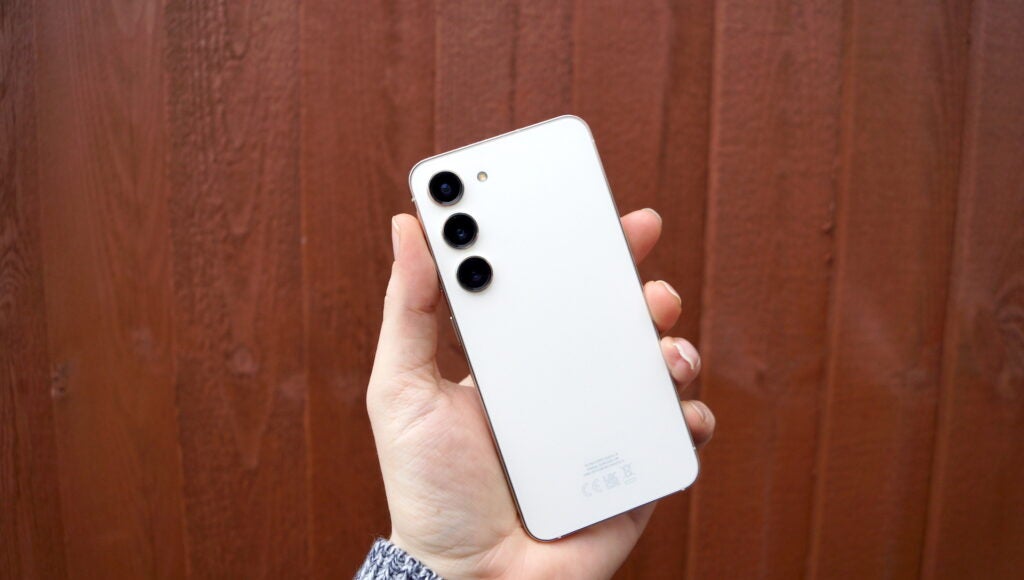
It’s also small but mighty, sporting a combination of Corning’s Gorilla Glass Victus 2 which is specifically said to perform better when dropped onto concrete, and with IP68 dust and water resistance protecting from unwanted ingress, it’s more than safe for a trip to the beach.
Dimensions aside, it’s just a good-looking smartphone with solid build quality and a high level of attention to detail. Everything, from the side-mounted power and volume keys to the placement of the antenna bands, feels purposeful.
It’s also available in the same colours as the Plus and Ultra models, with phantom black, cream, green and lavender finishes. It’s nice not to have to upgrade to a more expensive model just to get the colour you want, right?
Screen
- 6.1-inch AMOLED display
- 120Hz, but lacks LTPO tech
- Bright, vivid and detailed
The main driver behind the Samsung Galaxy S23’s pocketable nature is the 6.1-inch dynamic AMOLED 2X display. It boasts a buttery-smooth 120Hz adaptive refresh rate that makes everything feel responsive, and the display can automatically drop down to save on battery life, though it can’t drop to the same 1Hz as the LTPO 2-enabled S23 Ultra, capping out at 48Hz instead.
It’s something that has been rectified with the Galaxy S24, sporting the same LTPO tech as the top-end model, so it might be worth considering the newer model if that is particularly important to you.

There’s also support for HDR10+ content to improve the dynamic range in supported content, but like always, Dolby Vision support is notably missing.
A maximum brightness of 1250nits (or a boosted 1750nits when watching HDR content) means it’s easy to use in direct sunlight without hunting for shade (as I can attest during a trip to Barcelona) and, just as you’d expect from a high-end Samsung display, it’s bright, vivid and detailed.
I certainly had no complaints watching TikToks and YouTube videos, though I must admit, I did miss the larger display dimensions when it came to catching up with shows on Netflix.
The Full HD+ resolution may disappoint compared to the WQHD+ resolution from the likes of the S23 Ultra and OnePlus 11, but it’s arguably not a big a deal on such a small screen display; text and images are just as crisp and clear as they appear on high-res models, and videos look just as detailed as ever too. You certainly won’t be pixel-peeping, that’s for sure.
So, whether you’re into small-screen phones or simply want a change from big-screen alternatives, the Galaxy S23 is a solid compact option, though it is missing a few key bells and whistles compared to competing flagships.
Cameras
- Rear camera offering remains virtually unchanged
- Decent all-round performance from all three rear lenses
- Some images can look unnaturally vibrant
While the S23 Ultra gets an all-new 200MP snapper upgrade, the same can’t be said for the standard Galaxy S23, which sports the same combination of a main 50MP camera with dual-pixel PDAF and OIS alongside a 12MP 120-degree ultrawide and a 10MP 3x telephoto with OIS as its predecessor.

While that will be disappointing for those looking for a true camera upgrade, I will say that the S23’s rear camera setup remains fairly capable for the money. It’s also the same as the Galaxy S24, so upgrading won’t get you much else, either.

The main 50MP sensor sports pixel-binning tech that essentially combines multiple pixels together to improve detail and light. And when combined with improved AI that can enhance images by splitting them into segments, it produces well-lit, detailed shots in both well-lit and low-light environments.
It’s also pretty good with HDR capture, maintaining a decent level of detail in both bright and dark spots, even in challenging light conditions like sunsets.

What I will say is that images can look a little too vivid, sometimes bordering on unnatural. That’ll be fine for some – it certainly makes sunsets look more colourful, and it makes for great social media fodder – but it’s not quite what I’d describe as an accurate representation of what I actually saw.

Despite the lack of a 200MP rear sensor like its larger sibling, the S23 uses the 50MP sensor and f/1.8 aperture to squeeze every little bit of light and detail from low-light environments.
Results on dark scenes with some lighting, like a street at night, are pretty decent for the money, though its limitations are more obvious when light levels drop even further.

There are also new Expert RAW capabilities, a feature first introduced with the S22 series. While last year’s model was capped at capturing RAW images at 12MP despite the inclusion of a 50MP main sensor, that has been rectified this year with full 50MP RAW images available with the tap of a button.

The 10MP 3X telephoto lens is a handy to have when you can’t get quite as close to the subject of your photo as you’d like, while also offering a tighter angle for portrait photography – an area where the S23 excels in particular. OIS also helps capture detailed images at higher levels of zoom.
You can push past the full 3X zoom, though it doesn’t quite have the zoom capabilities of the S23 Ultra. Though you’ll get remarkable results at 10X, there is some loss of detail.
You can crank that to 30X, though results aren’t that great for anything aside from taking snaps of the moon. I’d consider it on a par with the S23 Ultra in terms of detail captured, which makes me wonder how much of the original image is used and how much is provided by AI…

Lastly, the 12MP 120-degree ultrawide is great for taking expansive shots of buildings – great for eye-catching buildings in London, like the below – without absurd image warping towards the edges.
But with a fairly narrow f/2.2 aperture, it’s not the best when light levels begin to drop. Images are fine, but look comparatively soft compared to shots taken on the higher-res main lens.

Flip the phone over and the selfie camera has also had a bit of TLC with a megapixel bump from 10MP to 12MP, and while that doesn’t sound like much, the new camera setup enables new features like Samsung’s ‘Super HDR’ and 60fps video recording capabilities.
It’s certainly enough for selfies and video calls, and it’s surprisingly decent in low-light conditions too, but you’ll want to use the rear lenses for any serious photography.
Performance
- Snapdragon 8 Gen 2 for Galaxy
- Speedy everyday performance
At the heart of the Samsung Galaxy S23 is Qualcomm’s ‘Snapdragon 8 Gen 2 for Galaxy’, a unique chipset exclusive to Samsung smartphones.
Qualcomm says the upgraded chipset boasts improved CPU performance with an increased 3.36GHz peak speed compared to the 3.2GHz you’ll find in the already top-end standard Snapdragon 8 Gen 2. It’s a similar story with GPU performance, with an upgraded Adreno GPU that’s both better performing and more energy efficient than the standard variant.
It’s also the same chipset as that found in the Plus and Ultra models, as well as the Samsung Galaxy Z Flip 5 and Samsung Galaxy Z Fold 5 foldable phones that surpass the £1000/$1000 mark. And, unlike the newer Galaxy S24, there’s no Snapdragon and Exynos split with the S23 series either, meaning you’ll get the same level of power regardless of the model you opt for and where you are in the world.
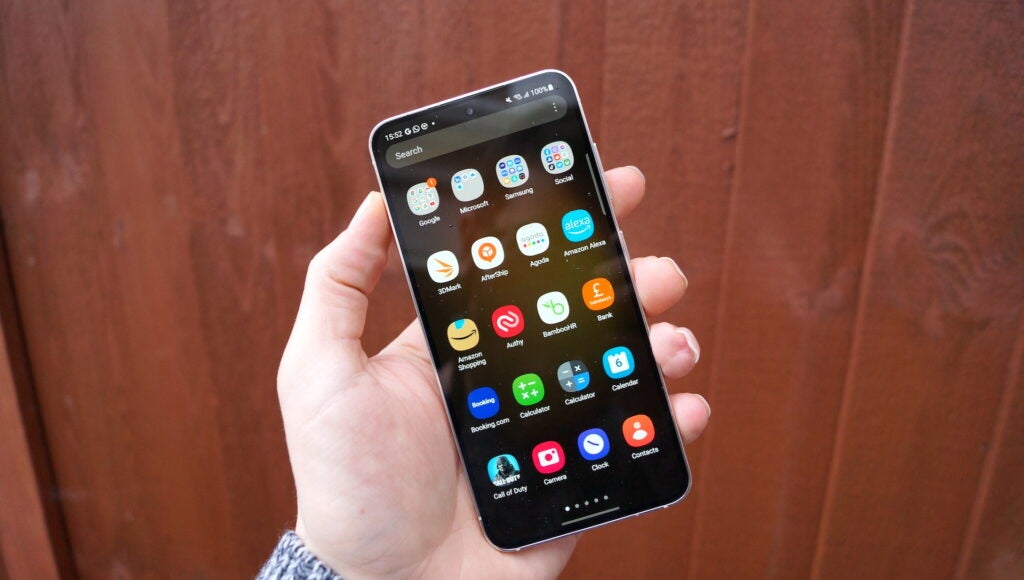
With that all said, it should come as no surprise that the Samsung Galaxy S23 feels blisteringly fast in use, handling just about everything I could throw at it including top-end AAA gaming with maximum graphics enabled without nary a stutter. Paired with the 120Hz refresh rate and responsive animations, opening apps and scrolling felt instantaneous.
That’s quantifiable too, with an impressive Geekbench 5 single-core score of 1551 and a multi-core score of 4819, and although the 3DMark Extreme Wild Life score of 3741 is similar to that of the S23 Ultra’s 3766, it’s faster when it comes to frame rates with a lower-res FHD+ display that scored 90fps in GFXBench’s top-end Aztec Ruins (high), compared to 55fps from the to-end S23 Ultra.
See how the Galaxy S23 compares to the competition and the Galaxy S22 in our benchmark breakdown:
When it comes to storage you’ve got the same 128GB or 256GB options as last year, which while not quite as much as the 512GB option from the S23 Plus and the 1TB from the S23 Ultra, should be enough for the majority of users. The 256GB variant does boast faster UFS 4.0 storage compared to the UFS 3.1 of the 128GB variant, but I doubt very much that anyone will notice a difference in everyday use.
Software
- Impressive multi-year software promise
- Runs on Android 13 with OneUI 5.1 update
The Samsung Galaxy S23, like the rest of the range, runs Android 13 with Samsung’s latest OneUI 5.1 update. It’s Samsung’s own spin on the Android OS and while it certainly isn’t as close to stock as you’ll find from Motorola and Nokia, it’s a largely polished OS with plenty of unique features for Samsung users to take advantage of.
That includes lock screen customisation in much the same way as Apple’s iPhone with the iOS 16 update. I can change not only the style of the clock but its size and position on screen, customise the shortcuts that appear at the bottom of the screen and even how incoming notifications are displayed. It doesn’t go quite as far as Apple’s option, lacking any widget support, but it’s a nice option for users.
There’s also Samsung DeX which essentially turns your smartphone into an Android-powered desktop that lets you run your favourite Android apps on a connected display, and you can pair a Bluetooth keyboard and mouse too. It’s not my personal favourite – I think Motorola’s ReadyFor is more advanced with better Windows integration – but it’s a nice touch if you like the idea of having a portable PC in your pocket.
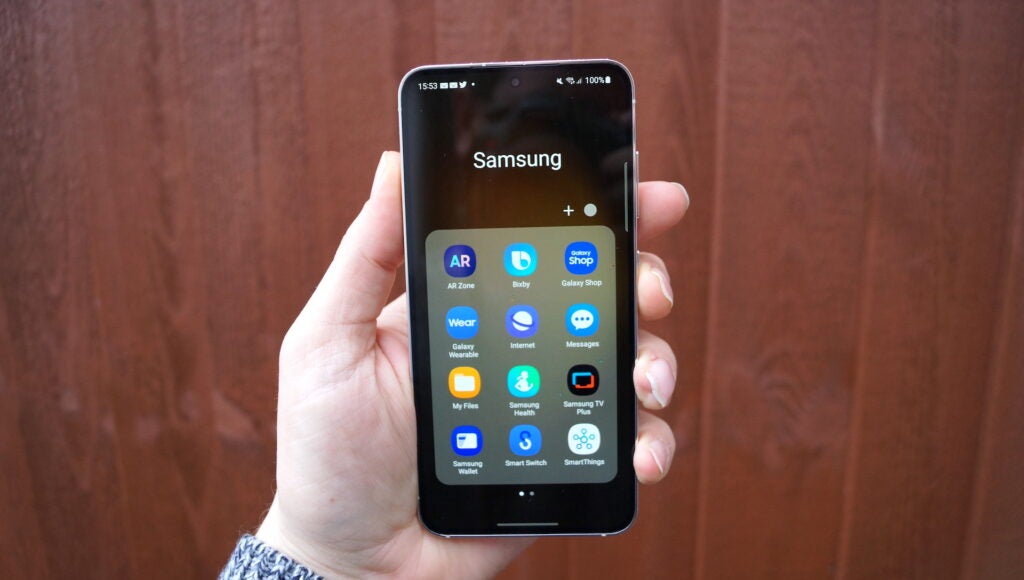
I will say, I’m not a huge fan of the number of Samsung-branded apps you’ll find in OneUI 5.1, with some apps – like the Messages app – sporting some odd design choices.
You’ve got the option of installing the Google variants of apps, as I did during my time with the phone, but I did notice that the phone purposely didn’t reinstall Google-branded apps from my backup where a Samsung variant was available, likely in a bid to get you to switch. That’s pretty cheeky, Samsung.
Overall though, it’s an easy-to-use skin with some helpful features, and it doesn’t require as much of a learning curve as some Android skins. I’m looking at you, Xiaomi.
Samsung is also offering four years of OS upgrades and five years of security updates, which should comfortably take the Galaxy S23 through to Android 17 – though it’s worth noting that this has been extended to 7 years of OS upgrades with the newer S24 series.
Battery life
- Packs a 3900mAh battery
- Battery life easily lasts the entire day
With the smallest battery in the Galaxy S23 range and most of the competition at 3900mAh – an increase of 200mAh compared to the Galaxy S22 – I was a little concerned about battery longevity, but my fears were largely unwarranted.
The combination of a smaller, lower-res FHD+ display than its larger siblings, and the improved battery efficiency of the Samsung-exclusive Snapdragon chipset, provided comfortable all-day battery life in my week with the smartphone.
Taking the phone off charge at around 7:30am, I’d use the phone to send messages, browse social media, listen to music and take the occasional snap. Most of the time it’d get to around 11pm with about 25% battery remaining.
It’s not quite a two-day device with what I’d describe as average use, but on days when I worked from home and didn’t use the phone for much else than sending the occasional text and making a call every now and again, it would get to the end of the day with closer to 50% charge remaining.
That performance is backed up by tests too, with an hour of HDR playback on Netflix draining just 6% of battery, while half an hour of light gaming will drain 7% of battery.

Charge speeds are a little disappointing, however, even by Samsung’s standards. I complained about the 45W charging of the Galaxy S23 Ultra, but the standard Galaxy S23 is even slower at just 25W, resulting in a 50% charge in 29 minutes and a full charge in 1 hour and 20 minutes. I’ve got a feeling this has been artificially stunted by Samsung to make sure the standard S23 doesn’t charge any faster than the top-end Ultra model…
That said, it’s still a phone that you’ll most likely charge every night, unlike the likes of competing flagships like the Realme GT 3 and its 240W charge which provides a full charge in just 9 and a half minutes.
Here’s how the Galaxy S23’s battery and charge speeds compare to the competition:
Should you buy it?
You want a small-screen phone without compromise
The pocket-friendly S23 boasts flagship features and performance in a smaller package than most of the competition.
You want a phone that’ll charge quickly
With the slowest charging in the range, the Galaxy S23’s 25W charge speeds may leave you wanting more.
Should you buy it?
You want a small-screen phone without compromise: The pocket-friendly S23 boasts flagship features and performance in a smaller package than most of the competition.
You want a phone that’ll charge quickly: With the slowest charging in the range, the Galaxy S23’s 25W charge speeds may leave you wanting more.
Final Thoughts
Small phones usually have one particular downfall – battery life – but it seems Samsung has fixed that issue with the S23 and the impressively battery-efficient Snapdragon 8 Gen 2 for Galaxy, with the phone’s 3900mAh battery easily able to get me through the day without reaching for a charger.
Still, it means that you can now enjoy a more pocketable form factor without much of a downgrade. The 6.1-inch dynamic AMOLED 2X display is stellar even without LTPO 2.0 tech, with plenty of brightness and detail, the rear camera offering remains capable even without a big upgrade and Samsung’s OneUI has some pretty handy features.
The Galaxy S23 Plus and Galaxy S23 Ultra will offer you even better photography if you’re willing to spend a little more, as will the newer Galaxy S24 range.
Overall, the Samsung Galaxy S23 offers a great (though not top-end) selection of tech in a portable form factor, and that remains the case even with the release of the newer Galaxy S24. If anything, it makes the S23 a little more tempting as it’ll now be available at a discount at most retailers.
As ever, check out our best smartphone and best mid-range phone lists for even more options.
How we test
We test every mobile phone we review thoroughly. We use industry-standard tests to compare features properly and we use the phone as our main device over the review period. We’ll always tell you what we find and we never, ever, accept money to review a product.
Find out more about how we test in our ethics policy.
Used as a main phone for the review period
Thorough camera testing in a variety of environments
Tested and benchmarked using respected industry tests and real-world data
FAQs
It’s available in Phantom Black, Cream, Green and Lavender finishes.
Yes, it’s IP68 rated to protect against dust and water ingress.
While technically it does, at just 25W, it’s far behind what you’ll get from much of the flagship competition.



